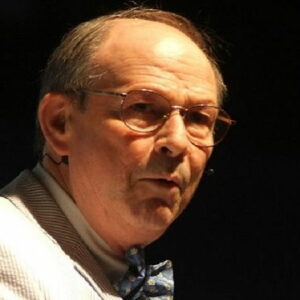Robert Coleman Richardson was an experimental physicist from the United States of America who shared the 1996 Nobel Prize in Physics. As a senior researcher at Cornell University’s Laboratory of Atomic and Solid State Physics, he co-discovered superfluidity in helium-3 atoms with David Lee and Douglas Osheroff. This was a seminal discovery in experimental physics. He was born in Washington, D.C., and grew up during WWII. He enjoyed attending school as a child, despite the fact that he was not a particularly bright student. He was an active member of the Boy Scouts and spent his high school years as a counselor at Camp Letts, a Boy Scout camp. He enrolled at Virginia Polytechnic Institute, initially choosing an electrical engineering course. However, he quickly became bored and changed his major to physics. Following graduation, he continued his education and earned a Ph.D. in physics from Duke University. As a postdoctoral researcher at Cornell University, he was promoted to assistant professor. He joined the Cornell research team that discovered superfluidity in the isotope helium-3 early in his long career.
Childhood & Adolescence
Robert Coleman Richardson was born in Washington, D.C., on June 26, 1937, to Lois Price and Robert Franklin Richardson. He was the younger brother of one sister. His father was a telephone company employee. When he was a small child, World War II broke out, and his father was drafted into the army.
He enjoyed school from an early age, but it wasn’t until much later that he developed a genuine interest in the sciences. He graduated from Washington-Lee High School in 1954 and enrolled at Virginia Polytechnic Institute the following year.
Initially, he intended to study electrical engineering but found the subject uninteresting. He changed his major midway through and earned a B.S. in physics in 1958. In 1960, he earned his M.S. Between November 1959 and May 1960, he also served six months on active duty in the US Army Ordnance Corps.
He desired to pursue a doctorate and enrolled at Duke University as a full-time graduate student in the fall of 1960. Horst Meyer served as his doctoral advisor, guiding the young man through his research at Duke’s low temperature group. He earned his PhD in 1965 and stayed another year at Duke as a research associate.
Career of Robert Coleman Richardson
Cornell University sought to expand its effort in low temperature physics in the mid-1960s. In 1966, Richardson accepted an invitation from the university’s Laboratory of Atomic and Solid State Physics to join them and work on very low temperature helium research with David Lee and John Reppy.
Cornell’s research team was extremely knowledgeable, and the late 1960s and early 1970s saw the lab undergo a period of intense research and discovery. In the early 1970s, Richardson and two colleagues—Senior researcher David Lee and graduate student Douglas D. Osheroff—worked together to investigate the properties of the isotope helium-3.
Richardson and Lee studied the internal pressure of helium-3 in 1972 after cooling it to within a few thousandths of a degree of absolute zero (273° C). Osheroff alerted them to minute fluctuations in internal pressure, which ultimately resulted in the discovery of superfluidity in the isotope helium-3.
He was appointed director of Cornell’s laboratory of atomic and solid-state physics in 1990, a position he held until 1996. He served as vice provost for research at Cornell from 1998 to 2007, and as senior science adviser to the president and provost from 2007 to 2009. During his later years, he ceased operating a laboratory, despite the fact that he remained the Floyd Newman Professor of Physics until his death.
Significant Work of Robert Coleman Richardson
When Robert Coleman Richardson, his Cornell colleague David Lee, and then-graduate student Douglas Osheroff discovered superfluidity in helium-3, they were conducting research in low temperature physics. He was a specialist in the study of the quantum properties of liquids and solids at very low temperatures.
Awards and Accomplishments
In 1981, Richardson shared the Oliver E. Buckley Condensed Matter Prize with David M. Lee and Douglas D. Osheroff. The award is given annually by the American Physical Society to “recognize and encourage outstanding theoretical or experimental contributions to condensed matter physics.”
The 1996 Nobel Prize in Physics was jointly awarded to Robert C. Richardson, David M. Lee, and Douglas D. Osheroff “for their discovery of superfluidity in helium-3.”
Personal History and Legacies
While a student at Duke, he met Betty McCarthy, a fellow physics student whom he married in 1962. Jennifer and Pamela, who was born with a heart defect, were the couple’s daughters. Pamela’s death from heart failure in 1994 was a major tragedy for the family.
Richardson died on February 19, 2013 as a result of complications following a heart attack three weeks prior.
Estimated Net Worth
The estimated net worth of Robert Coleman Richardson is unknown.


